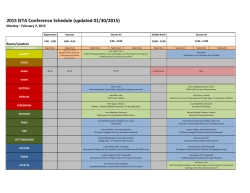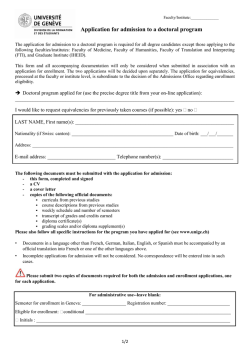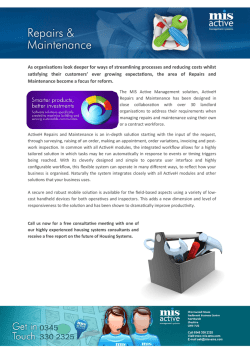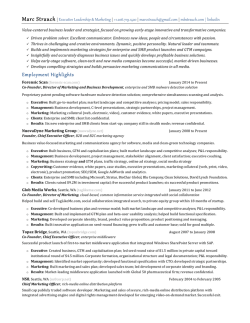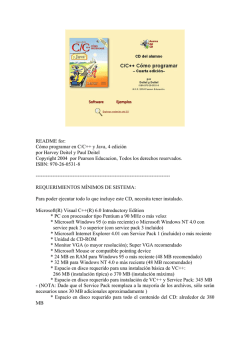
Viagra Czy Mozna Kupic W Aptece. Official Canadian Pharmacy
Journal of Integrated Enterprise Systems Vol.2 No.1, 2013 Earned Value Management Systems: Challenges and Future Direction Bryan Wilson Senior Software Engineer Northrop Grumman Corporation Cincinnati, OH 45207 email:[email protected] Thilini Ariyachandra Associate Professor of MIS Department of Management Information Systems Xavier University Cincinnati, OH 45207 email: [email protected] Mark Frolick Professor of MIS Department of Management Information Systems Xavier University Cincinnati, OH 45207 e-mail: [email protected] Abstract: Earned value management continues to grow in importance as a valuable project management technique that project based companies depend on; especially in the US government sector. US government contractors are now required to use earned value management systems (EVMS) for all project over 20 million dollars in order to compete for and successfully complete contracts (Fleming & Koppelman 2004). Enterprise resource planning systems, specifically Microsoft Dynamics solutions provide specific capabilities that enable organizations to effectively implement EVMS architecture. Many of the contemporary EVMS tools have issues related to collecting and recording data related to actuals as well as in recording and searching for textual data that could lead to insights. Many also fall short of providing analytical capabilities that could provide deep insights. While a next generation EVMS that addresses all issues is presently not in the market, a Microsoft Dynamics NAV and other Microsoft solutions based EVMS architecture provides an example of what is to come in the future in this space. Keywords: Earned value management systems, Enterprise resource planning systems, Microsoft Dynamics, EVMS architecture, Government contracts, Project performance. INTRODUCTION When faced with the implementation of complex, large scale, resource intense projects, companies depend on project management techniques to help plan, manage, monitor and forecast various aspects of a project (Keil, Rai, Cheney & Zhang, 2003). The importance of project management tools and techniques within organizations has become irrefutable. Its value and success within companies is well recognized (Lipovetsky, Tishler, Dvir & Shenhar, 2002). Earned value management is one such project management measurement tool that can be used during project implementation but also for comparison of performance between projects. Earned value management (EVM) is a method of measuring the current snapshot of a project in a way that achievements can be matched and compared with associated costs (Kim, Wells & Duffy, 2003). It is a management methodology that integrates project details that assess project success such as its scope, timeline and resources to give a comprehensive picture of project performance (Christensen, 1998). Earned value analysis uses three key 9 Journal of Integrated Enterprise Systems Vol.2 No.1, 2013 pieces of project information, which are the planned value, actual cost and earned value (See Figure 1). Value is “earned” while cost is accrued and the corresponding derived relationships indicate whether a project is behind or ahead of schedule and under or over cost. While EVMS is used in private industry, the most widely known implementations are used in the public sector, especially in the federal contracting industries (Abba, 1997). Planned Value Actual Costs Earned Value The budgeted cost for the work scheduled to be done. This is the portion of the project budget planned to be spent at any given point in time. This is also known as the budgeted cost of Work scheduled. The money spent for the work accomplished. This is also known as the actual cost of work performed. The percent of the total budget actually completed at a point in time. This is also known as the budgeted cost of work performed. EV is calculated by multiplying the budget for an activity by the percent progress for that activity: EV = % complete x budget Figure 1: Typical Curve Showing Planned value, Actual Cost and Earned Value (Lukas, 2008) Earned value management was first introduced to create consistent practices for use during large acquisition programs by the US government as part of the Cost/Schedule Control System Criteria (A set of criteria specified by the US Federal Government for reporting project schedule and financial information) to understand the financial aspects of programs. US government agencies use EVMS as a measure of accountability of the contractor (Abba, 2000). Using an EVMS, project-based companies gain the ability to forecast the actual cost of their projects from any given point during the execution phase (Fleming & Koppelman, 2000). This information can be used by managers to make decisions regarding project continuation or cancellation and is useful in mitigating critical path issues. EVMS can be used to spot schedule and cost risks early in production, making it a valuable tool in Enterprise Risk Management (ERM) and Enterprise Resource Planning (ERP). As a result, various US government bodies have adopted EVM as a standardized approach to performance measurement (Alleman, Henderson & Segglke, 2003). The general process for a US government agency using EVM typically takes the following form: a US government entity generates a request for proposal (RFP) and releases it to interested and/or preselected suppliers. From there, contracts create a basis of estimate (BOE), which is the initial revision of the work breakdown structure (WBS). While the BOE’s purpose is to justify the costs in the project, the WBS is the fuller project planning outlay. It is derived from the BOE once a contractor has been selected. Prior to a contract being awarded, the contractor is required to provide a WBS with baselined project plan dates (U.S. G.S.A., 2012). Next, the particular US government sponsors conduct an integrated baseline review (IBR) of the WBS, and upon approval, sign a contract allowing work to commence. Once work commences, EVMS status tracking begins to produce massive data streams across the enterprise that can be mined for meaningful decision making (Froelich, Ananyon, & Olson, 2005). 10 Journal of Integrated Enterprise Systems Vol.2 No.1, 2013 Some of the advantages gained through earned value management systems include the ability to manage cash flow effectively, improving visibility and control of projects, conflict avoidance and resolution through active monitoring and governance, and enabling large scale projects to be managed within resource constraints (Solomon & Young, 2007). EVMS enables organizations to plan, monitor and implement projects with greater precision and accuracy through objective assessment and prediction of time and budget constraints and project scope. Given its many advantages, the use of EVMS within the US government sector continues to increase. EVMS ARCHITECTURE The typical system architecture of an EVMS is comprised of a scheduler tool (usually Microsoft Project or Project Server, but can be Deltek Open Plan or Primavera), which feeds WBS and schedule information into a Microsoft SQL Server or another database server, and a .NET client that accesses the information in the database. Project managers first create their WBS and baseline in the scheduler tool and then import that data into an EVMS tool such as Deltek Cobra. As the project is performed, actual costs (i.e. timecard and purchase orders) are collected by an ERP system, such as Microsoft Dynamics and imported. Direct labor charging costs are typically imported weekly or sometimes even less frequently while direct materials costs can take longer to accrue (Fleming & Koppelman, Primavera, 2007). At the same time that actual costs are accruing, value is being earned as work is being accomplished and supplies are being procured. This value is manually recorded, in some form of percent complete at the granularity of the individual WBS elements. Figure 2 illustrates what current EVMS architectures typically look like (See Figure 2). Figure 2: A typical EVMS architecture. Although earned value management is well recognized in this space as a good means of project management, project failures are still common in this sector (Anbari, 2003). Kwak and Anbari (2012) describe examples of failures in public programs and projects in this manner. “Of the 840 major information technology (IT) investments (about $65 billion) in the U.S. federal IT portfolio in fiscal year (FY) 2008, there were 346 major IT investments (about $27 billion) that were not well planned and managed, reflecting investments on the Management Watch List as well as those rated Unacceptable. Of 840 projects, 340 valued at $9.9 billion are on the Management Watch List. These projects still need to address performance measures, implementation of earned value management, security or other issues before obligating funding in FY 2008.” (p. 77) As a result, the management and measurement of projects within the US government section using cost control techniques like earned value management are subjected to continuous revision and regulatory influences (Heinrich, 2002). US government contractors reporting on project status and performance for undertaken federal projects are mandated to use EVMS in order to receive federal funding. These organizations must submit business cases that utilize earned value management systems that are ANSI/EIA (American National Standards Institute/Electronic Industry Association) - compliant. The Office of Management and Budget (OMB) along with the Department of Defense (DoD) use these compliance guidelines to ensure that contractors use “effective, integrated, internal 11 Journal of Integrated Enterprise Systems Vol.2 No.1, 2013 management systems and make (FederalNewsRadio.com, n.d.). available accurate, valid, timely data” to all parties concerned This presents an ongoing challenge for US government contractors operating in this space. Some companies can get discouraged from tendering for US government contracts since implementing an EVMS can be rigorous, complex and time consuming. According to FederalNewsRadio.com implementing and reporting using an earned value management system requires training and resources to effectively monitor project progress and the management of cost accounting throughout the process. As such, many often feel that that full EVM compliance can be difficult to achieve. The process of tracking and managing project performance for EVM requires accurate and timely feedback of costs and schedules which can be measured against a baseline of budgets and planned schedules. A robust accounting system that can handle the complexities of the guidelines can help most US government contractors achieve EVM compliance (Wencel, n.d.). One such robust accounting system is offered by Microsoft Dynamics. Microsoft Dynamics ERP Financial Management is a robust accounting system that when combined with Microsoft Project Server provides an effective solution to meet US government EVM compliance. ERP and General Ledger solutions offered by Microsoft Dynamics can feed data for earned value management. EVMS that are integrated with an ERP solution such as Dynamics can provide essential information for EVMS cost and performance analysis such as time reporting data, purchasing data, supplier costs, etc… According to Wencel (n.d.) earned value performance can be efficiently ascertained through an accounting system that can provide real time data to an EVMS. When accounting data that is closely tied to project, material and labor data is presented to the EVMS, greater accuracy can be gained from measurement as less data reentry work is required. One possible system architecture for EVM using Microsoft applications as architecture component examples is presented in Figure 3. As indicated in the figure, the scheduler tool (i.e., Microsoft Project or Project Server), feeds the WBS and schedule information into a Microsoft SQL. Once project managers create their Work Breakdown Structure and baseline in Microsoft Project Server, its imported to the EVMS tool. As the project gets underway, the actual incurred in the project are stored in the Microsoft Dynamics NAV ERP system and imported as well. The immediate and continuous data flow, as work is being accomplished and supplies are being procured, from the ERP system to the EVM solution is essential in computing how value is earned. As such, having an effective ERP solution such as Microsoft Dynamics becomes critical to the overall system architecture for an EVM solution. Figure 3: General system architecture for EVM. 12 Journal of Integrated Enterprise Systems Vol.2 No.1, 2013 CHALLENGES OF EVMS While its value is well established in the US government sector, organizations face many challenges in implementing and maintaining EVMS solutions (Kim, 2000). Two specific issues related to EVMS are discussed next. Contextual Data Analysis Earned value analysis requires great effort in maintenance. Data collection is key to adoption and wide applicability (Vargas, 2003). The problem with current tools is that it takes considerable work to correlate actuals with earned value. For instance, even though common EVMS tools can integrate with ERP systems that contain actual hours and dollars spent on a specific charge number (i.e., a specific formal work authorization), they do not provide the ability to track down to the activity level. This means that if a WBS element for a task represents the granularity of the activity, then earned value can be traced directly back to the actuals on that charge number. However, most projects are much larger in scope, and do not allow this kind of granularity. As each WBS element is reviewed in OBS, there is incentive on both sides of EVMS to keep the cost of OBS as minimal as necessary. Thus, a charge number will have multiple activities associated with it. A design charge number may have several dozen people charging it with each designing a different part of the whole. Consequently, when tracking how much time the design process actually takes, the actuals mask any information regarding the nature of the individual subtasks. An example of this information loss would be when a testing task moves past its baseline date because of testing equipment failures. This type of information would get recorded in two different places: email exchanges between employees localized around the problem (and potentially up the managerial hierarchy depending on severity), and in the EVMS reporting. If other projects have experienced the same failures regarding test equipment from the same vendor, this information is not readily available via the EVMS. The options available to discover this information is limited. The company may discover this information only by searching through users’ emails, relying on different organizations to brief each other on lessons learned, or by utilizing the EVMS status tasks and comments as searchable content. Two of the options are less feasible. It is invasive of employees’ privacy to search email content and lessons learned meetings are not common place and are expensive to hold. Subsequently, the use of EVMS may provide the only alternative to get at this otherwise lost information. Each time a task goes over on baselined hours or schedule, new line items are entered into the EVMS. It is effectively a newly generated task in the WBS, except it falls into an existing WBS element. In the test equipment example, this new task may have been recorded as “25 hours to replace broken signal generator from Company X”. Currently, this is unsearchable data in most EVMS software tools such as Cobra. It is often recorded in a spreadsheet and placed at a nonspecific location on the corporate intranet that may not get the attention of key stakeholders of the project. Having the ability to go to an EVMS for actuals’ overruns would provide valuable information relevant to project success. For instance, in the case of the above example, the organization may discover that four projects ran over due to provider X’s faulty signal generators indicating the need to find another provider in the future. Such mini insights in EVMS data could lead to larger company-wide insights over time. Time Consuming Data Collection In addition, another issue with current EVMS software tools is the time spent in attempting to adhere to FAR and ANSI-748 reporting requirements. Many tools can generate cost efficiency (or inefficiency) metrics and reports with ease. However, they do not lend themselves to the ease of data collection which is considered key to widespread adoption (Vargas, 2003). Most tools currently do not enable control account and/or project managers the ability to collect data on actuals without spending considerable time collecting status data. In order to apply actuals to a specific task, currently a manager has to ask each of his or her team members how much time they spend doing each task. This generally happens weekly and coincides with when actuals become available. Easier means of data collection is required to reduce time taken to gather this data. 13 Journal of Integrated Enterprise Systems Vol.2 No.1, 2013 An enhancement to EVMS tools is needed to provide a mechanism for each project contributor to indicate their hours on a charge number and allocate that time to specific tasks rather than indicating hours to the overarching WBS element. This would require ERP systems to understand textual data beyond the simple structured charge number data. For example, consider the situation of a production worker spending 16 hours building a wiring harness and then 4 hours soldering the contact points. The worker charges 20 hours to a single charge number requiring his manager to reach out to him and ask how much time was spent on each task as the context related to his hours were not captured. A change to the EVMS architecture that provide the worker the ability to directly enter information for each task to the EVMS, in addition to extracting data from the ERP system, could resolve this issue. The EVMS system would be told 16 and 4, but then the data is translated to 20 for the charge number. The information is entered a single time into the EVMS and the production manager saves time by seeing it took 16 hours to build and 4 hours to install. EVMS status is automatically updated – the only input required beyond the charging is whether the task has started and if it has finished. For many companies full-fledged EVMS is too demanding to justify because it truly needs large scale implementations to cover the accounting expenses (Fleming & Koppelman, 2003). While the genesis of EVMS was in large-scale US federal government acquisition programs, EVMS has also gained traction in smaller programs and the private sector. There is untapped value in private industry for EVMS (Kwak & Anbari, 2012). However, for private industry to fully embrace EVMS the cost of using the system must lower and the system may also need to provide further value add to the user beyond its contemporary use as a project management system. One such contemporary use would be to provide more business intelligence (BI) and analytics capability to users when combined with existing data warehousing infrastructure within the organization. Figure 4 illustrates what one possible EVMS architecture may look like that could address some of the challenges described above. Figure 4: Proposed EVMS architecture of next generation tool suites. In exploring issues related to EVMS, the figure also provides recommendations and proposes enhancements to next generation EVMS products to become part of the business intelligence and analytics eco system (See Figure 4). There is a vast amount of data that accumulates in EVMS as projects are executed over time and an enterprise can benefit from integrating this knowledge into its BI practice (Gowan, Mathieu, & Hey 2006). Thereby, it can create stronger links to the existing business intelligence and analytics infrastructure within the organization. Some Microsoft partners are currently offering EVMS architecture solutions that provide functionality beyond simple project management (Microsoft 2007). 14 Journal of Integrated Enterprise Systems Vol.2 No.1, 2013 For instance, Microsoft Dynamics NAV for US government Contractors from Pleasant Valley Business Solutions (PVBS) provides an EVMS architecture that is integrated with business processes across a US government contractor’s entire business. (Microsoft, 2010) Using Microsoft Dynamics NAV along with other Microsoft technologies such as Microsoft Project Server, and Microsoft CRM provides a financial management and project accounting solution for earned value management. By integrating with Microsoft SharePoint Technologies, Dynamics NAV enables contractors to communicate and distribute information within the organization as well as with their US government customers. In addition to providing functionality to perform project cost accounting and account for indirect costs, PVBS offers built-in analytics and online reporting services giving its users the ability to go beyond cost management to use business intelligence features for effective decision making. CONCLUSION While tools available today promise an improved EVMS tracking experience, they do not aim to optimize the experience. There are issues that plague organizations engaging in EVMS based project management and further hinder new entrants into this space in the US government sector. Growth of EVM as a prudent project management technique in the private sector is stifled by the complexity and resource intense nature of EVMS. Current experience and literature suggests that EVMS reporting and tracking tools increase the project and control account managers’ workload. In most circumstance, EVMS can negatively affect the productivity of individual contributors as well. A goal of next generation EVMS tools should be to minimize the amount of effort taken to track EVMS so as to make it financially viable to use the earned value. This would benefit the private sector as well where there are no explicit industrial or contractual requirements for doing so. A second, loftier goal is to make mining capabilities available to the data captured in EVMS, so as companies can gain insight from this contextual unstructured data. Finally, linking of data generated by EVM systems into an organizations existing business intelligence environment can enhance the business performance management capabilities of the organization. Some organizations are providing such analytics capabilities to clients such as the Microsoft partner described in the paper. Each of these goals will lead to an increased competitive advantage derived from lower bid prices (less overhead), more accurate forecasting and bases of estimation, and higher quality since technical and production staff will be more focused on their responsibilities earning value rather than contributing as much time to status, tracking, and reporting. REFERENCES Abba, W. F. (1997). Earned value management-reconciling government and commercial practices. Program Manager, 26, 58-63. Abba, W. (2000, April). How earned value got to primetime: A short look back and a glance ahead. In Project Management Institute Seminars and Symposium in Houston, TX. Alleman, G. B., Henderson, M., & Seggelke, R. (2003, June). Making agile development work in a government contracting environment-measuring velocity with earned value. In Agile Development Conference, 2003. ADC 2003. Proceedings of the (pp. 114-119). IEEE. Anbari, F. T. (2003). Earned value project management method and extensions. Project Management Journal, 34(4), 12–23. Christensen, D. S. (1998). The costs and benefits of the earned value management process. Journal of Parametrics, 18(2), 1-16. Deltek, Inc. (2012). Deltek Cobra: Cost Management Made Easy. Retrieved from deltek.com/cobra: http://www.deltek.com/products/ipm/cobra/~/media/PDF/Brochures/GovCon/Deltek-Cobra-BR.pdf FederalNewRadio.com. (n.d.) Transparency, accountability drive government’s growing earned value requirements. Retrieved from http://www.federalnewsradio.com/pdfs/MicrosoftWP_feb_final.pdf 15 Journal of Integrated Enterprise Systems Vol.2 No.1, 2013 Fleming, Q. W., & Koppelman, J. M. (2000). Earned value project management, (2nd ed.). Upper Darby, PA: Project Management Institute. Fleming, Q. W., & Koppelman, J. M. (2003). What's your project real price tag? Harvard Business Review8(9), 2022. Fleming, Q. W., & Koppelman, J. M. (2004). If EVM is so good... Why isn't it used on all projects?. The Measurable News, 1-5. Fleming, Q. W., & Koppelman, J. M. (2007). Earned value lite: Earned value for the masses. Retrieved from Primavera: http://www.nu-solutions.com/downloads/earned_value_lite.pdf Froelich, J., Ananyon, S., & Olson, D. L. (2005). Business intelligence through text mining. Business Intelligence Journal, 10(1), 43-50. Gowan, J. A., Mathieu, R. G., & Hey, M. B. (2006). Earned value management in a data warehouse project. Information Management & Computer Security, 14(1), 37-50. Heinrich, C. J. (2002). Outcomes–based performance management in the public sector: implications for government accountability and effectiveness. Public Administration Review, 62(6), 712-725. Kim, E. (2000). A study on the effective implementation of earned value management methodology (Doctoral dissertation, The George Washington University). Kim, E., Wells, W. G., & Duffey, M. R. (2003). A model for effective implementation of earned value management methodology. International Journal of Project Management, 21(5), 375-382. Keil, M., Rai, A., Cheney Mann, J. E., & Zhang, G. P. (2003). Why software projects escalate: The importance of project management constructs. Engineering Management, IEEE Transactions on, 50(3), 251-261. Kwak, Y. H., & Anbari, F. T. (2012). History, practices, and future of earned value management in government: Perspectives from NASA. Project Management Journal, 43(1), 77-90. Lipovetsky, S., Tishler, A., Dvir, D., & Shenhar, A. (2002). The relative importance of project success dimensions. R&D Management, 27(2), 97-106. Lukas, J. A. (2008). Earned Value Analysis – Why it doesn’t work. AACE International Transactions. Retrieved from www.icoste.org/LukasPaper.pdf Microsoft. (2007). Construction firm integrates business systems with comprehensive solution. Retrieved from http://www.microsoft.com/casestudies/Case_Study_Detail.aspx?casestudyid=4000006646 Microsoft. (2010). Government-contractor technology provider creates more value with software services. Retrieved from http://www.microsoft.com/casestudies/Case_Study_Detail.aspx?casestudyid=4000006646 Owen, J. K. (2008). Implementing earned value management in a R&D environment. Cost Engineering, 50(10), 1217. Solomon, P. J., & Young, R. R. (2007). Performance-based earned value: its benefits and costs. J. Wiley & Sons. U.S. G.S.A. (2012). Subpart 34.2—Earned Value Management System. (G. S. Administration, Producer, & United States Government) Retrieved from FAR: https://www.acquisition.gov/far/current/html/Subpart%2034_2.html#wp1111816 16 Journal of Integrated Enterprise Systems Vol.2 No.1, 2013 Vargas, R. V. (2003). Earned value analysis in the control of project: Success or failure? AACE International Transactions. Biographical Notes Bryan Wilson is a senior software engineer at Northrop Grumman Corporation where he develops custom electronic products and services for the United States Government. He is a recent MBA graduate of the Williams College of Business at Xavier University. As the lead engineer of a multi-discipline product development team, Bryan has experienced firsthand the operation of earned value management systems and the associated costs and benefits on program engineering and execution. His interests in EVMS include reducing its impact on engineering and production as well as improving capabilities for data mining of unstructured EV content. Bryan has 10 years engineering experience in the electronics industry, the last 7 coming in the government contracting segment. Prior to working at Northrop Grumman he was a circuit design engineer at Advanced Micro Devices. Thilini Ariyachandra is an Associate Professor of MIS in the Williams College of Business at Xavier University in Cincinnati. She received her Ph.D. from the Terry School of Business at the University of Georgia. Her research is focused on the selection, design, and implementation of business intelligence in organizations. Specifically she focuses on BI and Big Data infrastructure architecture and development methodologies, BI agility and success and BI education. She has published in journals such as Information Systems Management, Business Intelligence Journal, International Journal of Business Intelligence Research, Communications of the AIS, Communications of the ACM, and Decision Support Systems. She collaborates extensively with industry to improve business intelligence curriculum and pedagogy including participating in advisory boards of vendor academic alliances and serving as an officer of the Special Interest Group for Decision Support Systems for the Association for Information Systems. Mark N. Frolick is a Professor of MIS in the Williams College of Business at Xavier University and the holder of the Western & Southern Chair in Management Information Systems. Dr. Frolick was formerly Professor of MIS and Associate Director of the FedEx Center for Cycle Time Research at The University of Memphis. Dr. Frolick is considered to be a leading authority on business intelligence. His specialties include business performance management, business intelligence, data warehousing, executive information systems, e-business, cycle time reduction, and the diffusion of information technology in organizations. Dr. Frolick has authored over 130 articles. His research has appeared in such prestigious journals as MIS Quarterly, Decision Sciences, Journal of Management Information Systems, Decision Support Systems, and Information & Management. Dr. Frolick has over 20 years of experience in the information systems field. He received his Ph.D. from the Terry School of Business at the University of Georgia. 17
© Copyright 2026



